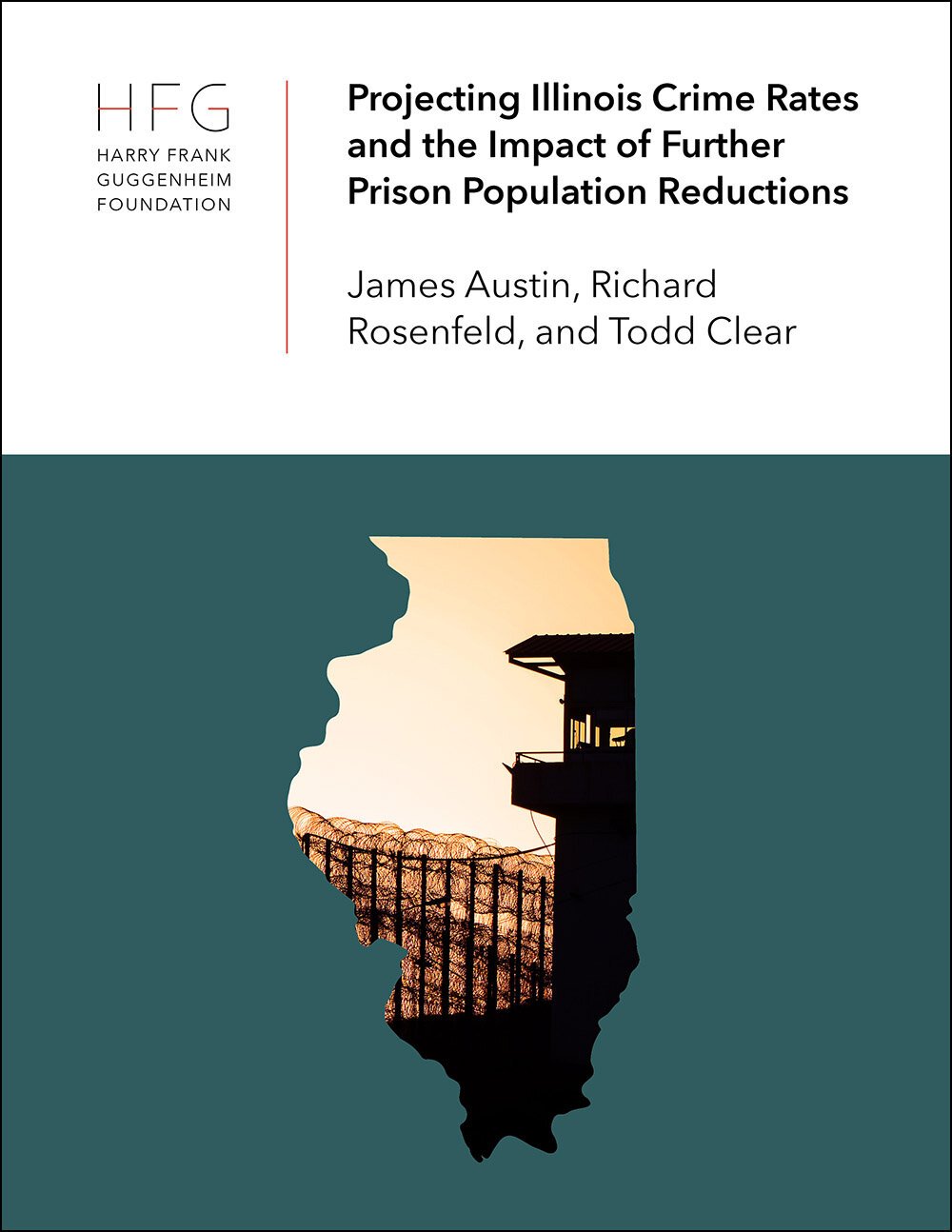By James Austin, Todd Clear, and Richard Rosenfeld
Illinois is one of several states considering how to reduce its prison population amid the pandemic and calls for an end to mass incarceration. In recent years, the state has taken steps to reduce its prison population through judicial discretion, bail reform, and diversion programs. As Illinois’ prison population declines and policymakers, prosecutors, and courts consider alternatives to incarceration, what is the risk to public safety? Is crime likely to increase or decline in the state as those convicted of crimes are released or diverted to other programs? In this study, funded by The Harry Frank Guggenheim Foundation, the authors conclude that Illinois crime rates, which have been on the decline since the 1990s, will continue to decline in a fluctuating pattern, with moderate year-to-year changes. This will be true even if Illinois reduces its prison population by an additional 25% over five years. The authors reached this conclusion by constructing a quantitative model that accounts for Illinois crime trends over nearly four decades and provides a basis for predicting crime rates in the near future. This study is a companion to the 2020 Harry Frank Guggenheim Foundation report Explaining the Past and Projecting Future Crime Rates, which examined national crime trends and reached similar conclusions about crime rates in the near future.
New York: Harry Frank Guggenheim Foundation. 2020, 23pg



